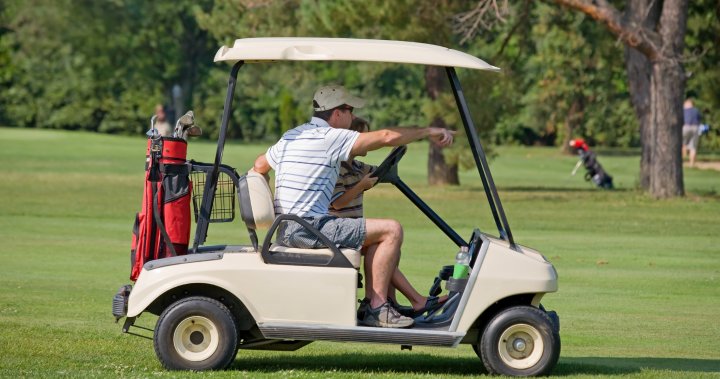In a recent commentary published in the Canadian Medical Association Journal, health professionals from Unity Health Toronto have expressed concern over the rising number of golf-cart-related injuries. These incidents are often severe, and in some cases, even fatal. The authors urge governments to address this growing issue as a public health concern, especially since children, older adults, and individuals under the influence of alcohol are frequent users of golf carts. The lack of safety restraints such as seat belts, lap bars, and side doors on golf carts only heightens the risk of injuries.
Regulations surrounding the use of golf carts vary across provinces and territories in Canada. While some places have introduced pilot projects with regulations such as maximum speed limits, the need for a valid driver’s license, and restrictions on passengers younger than eight years old, other areas have more lenient rules. Across the board, there is a call for consistent and unambiguous regulations for golf cart users to be implemented nationwide. The authors also suggest introducing insurance incentives and disincentives to encourage safe practices among golf course operators and drivers.
Children are particularly vulnerable to injuries when riding in golf carts, with statistics showing a steady rise in injuries among children and adolescents over recent years. A significant number of injuries occur in children aged 12 and younger, with more than half of the cases involving superficial wounds and fractures or dislocations, mainly affecting the head and neck. Injuries often occur at public and private golf courses, home and farm properties, and university campuses, where alcohol consumption is common, further increasing the risk of accidents.
Several studies have highlighted the dangers of golf carts, with incidents resulting in severe injuries and even fatalities, such as the case of a four-year-old boy who died from a traumatic brain injury in Peterborough, Ontario. Alcohol consumption is often a contributing factor in golf cart accidents, with a high percentage of individuals involved in golf-cart-related injuries testing positive for alcohol. Current golf cart designs lack essential safety features such as seat belts, lap bars, front windshields, side doors, and airbags, making occupants more susceptible to ejection in the event of an accident.
It has been found that the most common mechanisms of golf-cart-related injuries are ejection from the vehicle and the cart overturning, with children as young as nine driving golf carts in some cases. Safety equipment such as seat belts is seldom used, and child drivers are often associated with accidents involving cart overturning. The lack of safety measures on golf carts has led to substantial morbidity in trauma centers. The authors emphasize the need for increased safety measures, such as higher hip restraints, seat belts, and front-wheel brakes, to enhance the safety of golf carts and reduce the frequency and severity of injuries.
In conclusion, the doctors at Unity Health Toronto urge physicians to advocate for immediate changes to reduce the frequency and severity of golf-cart-related injuries. They call for increased awareness among users and property owners regarding the hazards of operating a golf cart and recommend modifying behavior and policies accordingly. The authors also emphasize the importance of governments, regulatory agencies, and manufacturers introducing and enforcing new safety standards for the manufacture, sale, and use of golf carts to address the growing concerns surrounding golf-cart-related injuries.


